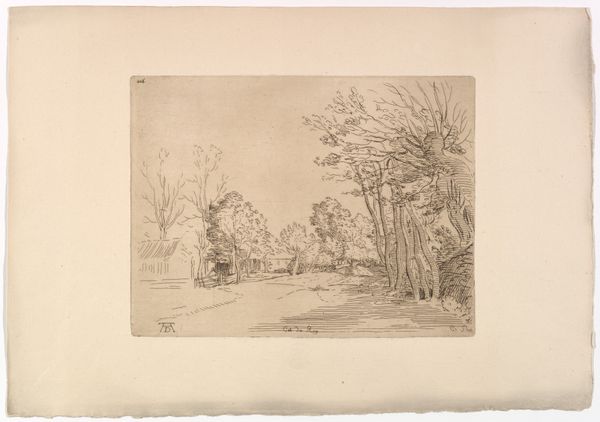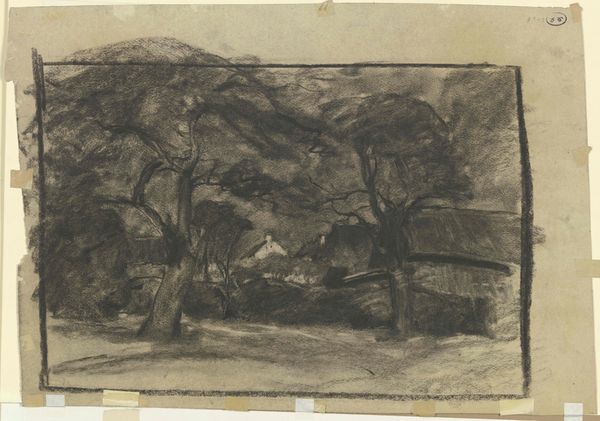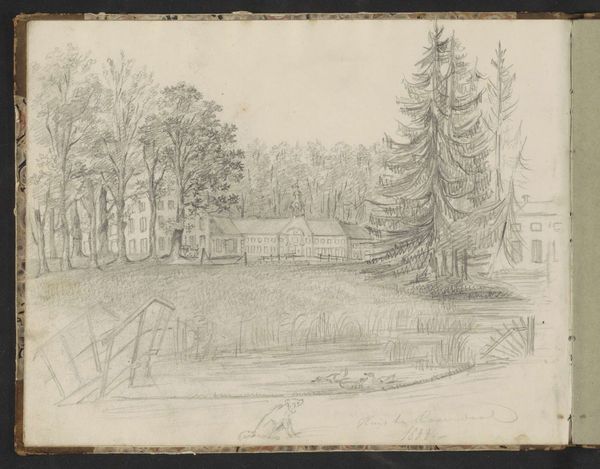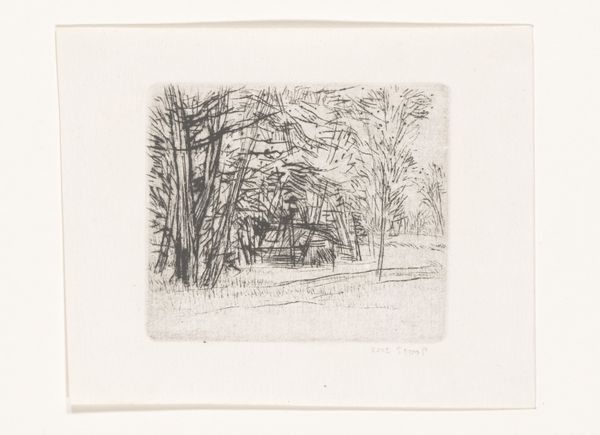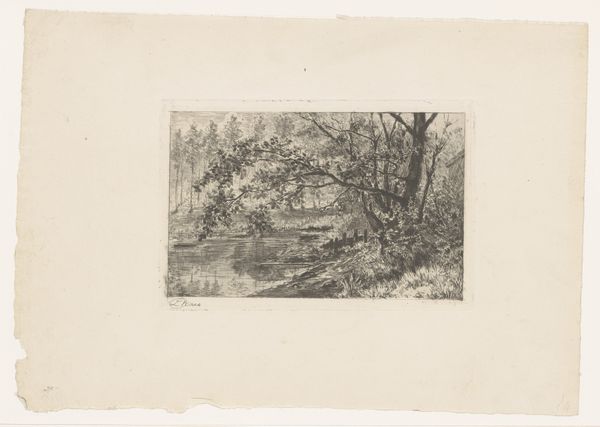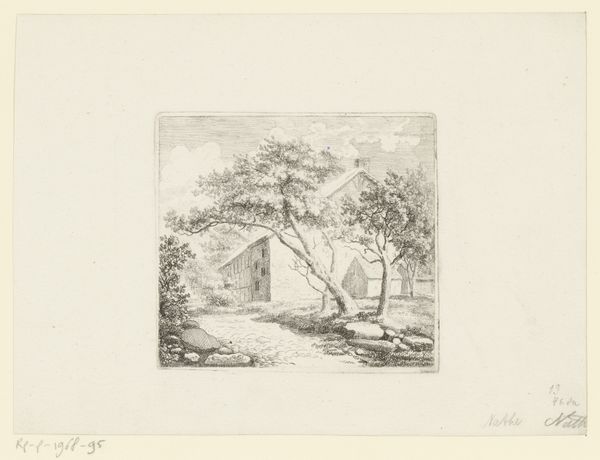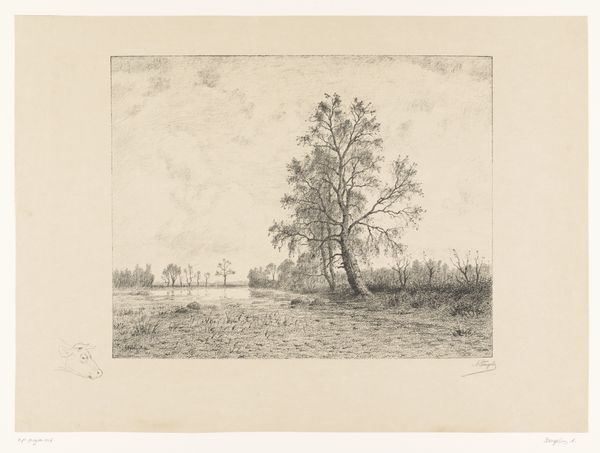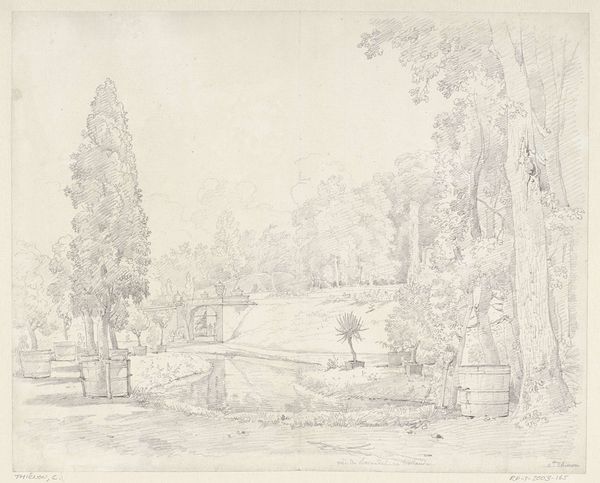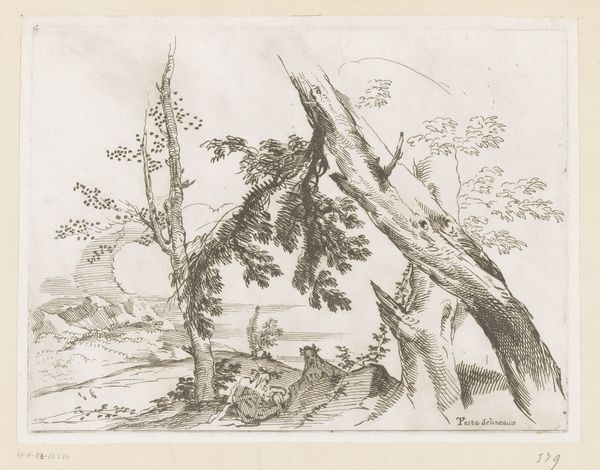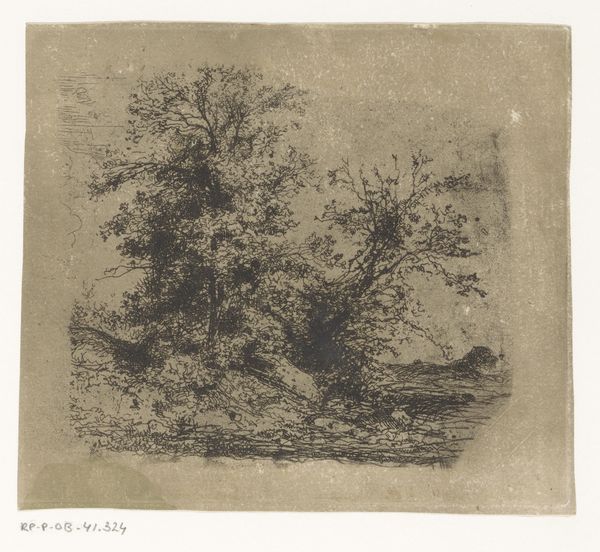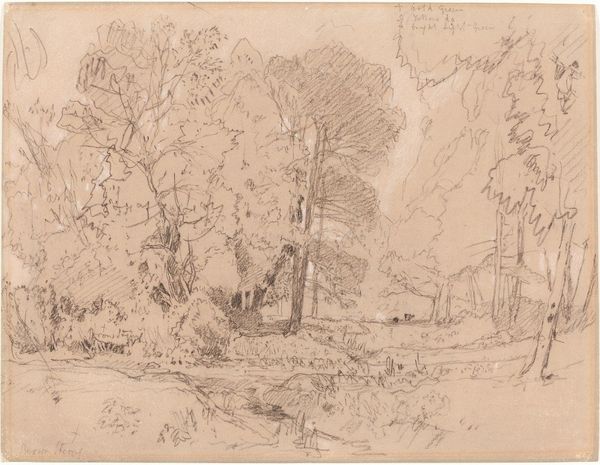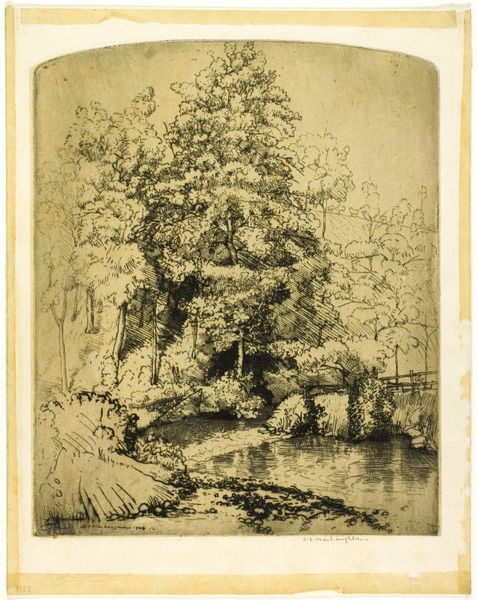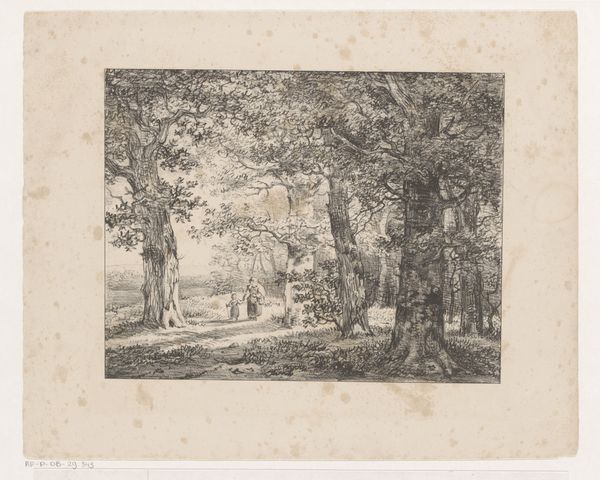
drawing, pencil
#
drawing
#
landscape
#
charcoal drawing
#
pencil drawing
#
pencil
#
naturalism
Dimensions: image: 27 x 31.5 cm (10 5/8 x 12 3/8 in.) sheet: 34.2 x 40.6 cm (13 7/16 x 16 in.)
Copyright: National Gallery of Art: CC0 1.0
Editor: So, we’re looking at Robert Polhill Bevan's "The Plantation," a pencil and charcoal drawing created sometime between 1919 and 1922. It's a fairly dense landscape; it strikes me as quite somber, almost claustrophobic with all those trees packed in. What jumps out at you? Curator: The title, “The Plantation,” given the period, immediately prompts a socio-political reading. It is key to consider what ‘plantation’ evokes. Are we invited to read the landscape as symbolic of power, control, and perhaps even the legacy of colonialism, filtered through the lens of early 20th-century Britain? Editor: That's interesting, I was mainly reacting to the visual elements, like how densely packed everything is. So, do you think the plantation here is meant to represent something beyond just a group of trees? Curator: I think we have to consider that the choice of subject and title couldn’t be arbitrary. Bevan was active during a period of intense social change and reflection on Britain's place in the world. Landscape art itself had become a stage for projecting national identity and ideologies. Consider the contrast of ‘untamed’ nature versus cultivation. What tensions arise for the viewer? Editor: So you're saying the drawing becomes more about the politics of land ownership and historical implications rather than just being about the trees themselves? Curator: Precisely. The drawing's merit lies not only in its aesthetic quality, the balance of dark and light or the artist’s rendering skill. More interesting is the conversation it implicitly holds with contemporary debates around land, labour, and imperial power. Editor: That totally changes how I see it. I was focused on the technique, but now I'm wondering about the deeper, more complex layers it reveals about history. Thanks for pointing that out. Curator: Art holds power, yes, to represent but also to actively shape societal understanding and memory. Bevan’s piece may, even inadvertently, expose the intricate and often disquieting connection between land and power.
Comments
No comments
Be the first to comment and join the conversation on the ultimate creative platform.
